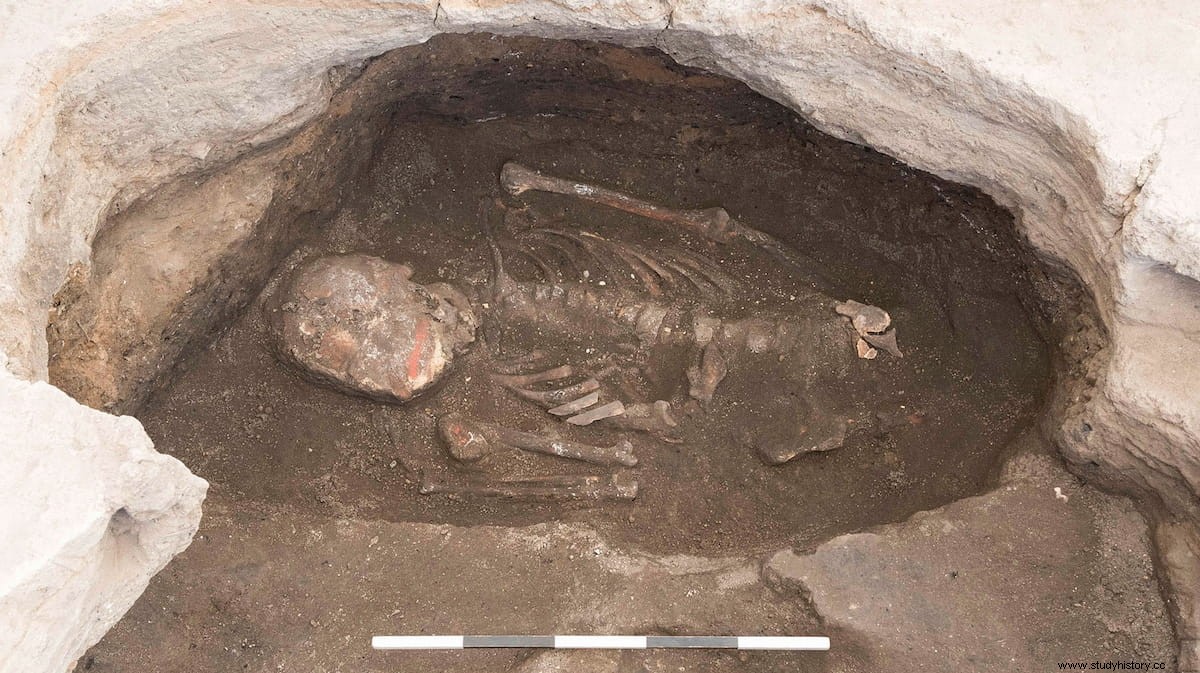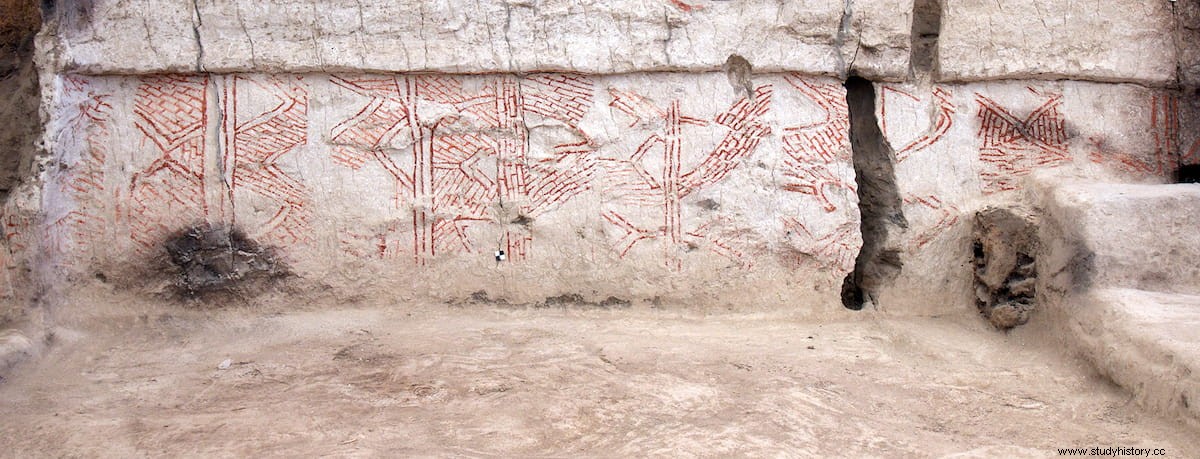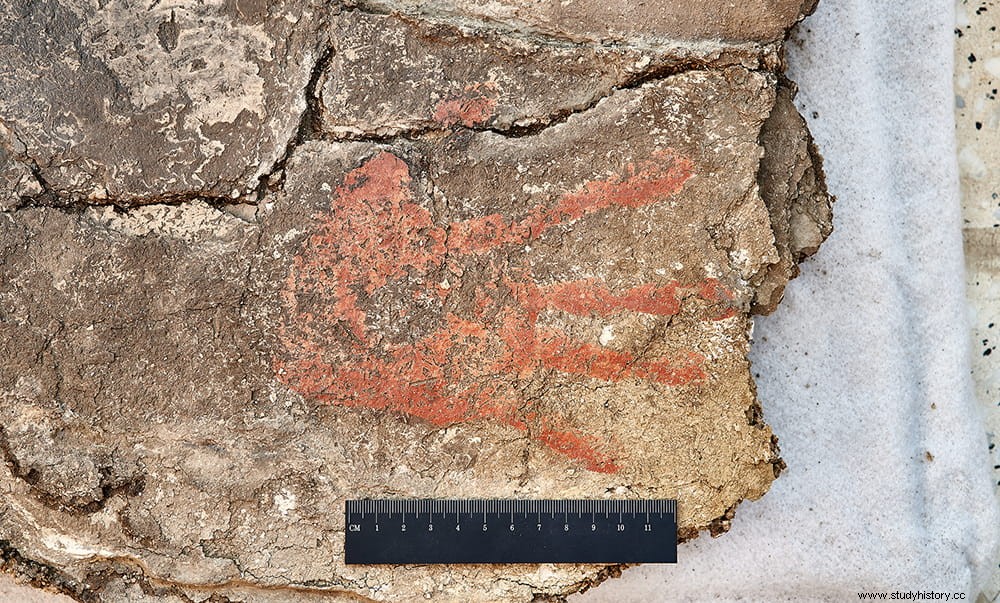An international team with the participation of the University of Bern provides new data on how the inhabitants of the oldest settlement in the world buried their dead in Çatalhöyük (modern Turkey). The bones were partially painted, unearthed and reburied several times. The findings provide insight into the funerary rituals of a fascinating society that lived 9,000 years ago.
Çatalhöyük (Central Anatolia, Turkey) is one of the most important archaeological sites in the Middle East, with an occupation dating back 9,000 years. This Neolithic settlement, known as the oldest settlement in the world , occupies an area of 13 hectares and features densely aggregated adobe buildings.
The houses of Çatalhöyük present the archaeological traces of ritual activities, including intramural burials with some skeletons that present traces of dyes, and mural paintings.

The association between the use of dyes and symbolic activities is documented in many human societies, past and present. In the Near East, the use of pigments in architectural and funerary contexts becomes especially frequent from the second half of the IX and the VIII millennium BC. Archaeological sites in the Near East dating back to the Neolithic have provided a great deal of evidence for complex, often mysterious, symbolic activities.
Among them are secondary funerary treatments, the recovery and circulation of parts of the skeleton, such as skulls, and the use of pigments both in architectural spaces and in funerary contexts.
A study recently published in the journal Scientific Reports by an international research team provides the first analysis of the use of pigments in funerary and architectural contexts at this essential Neolithic site.

According to the lead author of the study, Marco Milella (Department of Physical Anthropology, Institute of Forensic Medicine, University of Bern):These results reveal an exciting insight into the association between the use of dyes, burial rituals and living spaces. life in this fascinating society .
A journey through time to a world of colors, houses and the dead
Marco Milella was part of the anthropological team that excavated and studied the human remains of Çatalhöyük. His job is to try to make ancient and modern skeletons talk . Establishing age and sex, investigating injuries or special treatment of the corpse, and solving skeletal puzzles are routine activities in the Department of Physical Anthropology.
The study shows that red ocher was the most used color in Çatalhöyük, present in some adults of both sexes and in children, and that cinnabar and blue/green were associated with men and women, respectively.

Interestingly, the number of burials in a building appears to be associated with the number of subsequent layers of architectural paint. This suggests a contextual association between funerary deposition and the application of dyes in the domestic space.
This means:when they buried someone, they also painted on the walls of the house says Milella. Furthermore, in Çatalhöyük, some individuals stayed in the community:its bone elements were recovered and circulated for some time, before being reburied. This second burial of bone elements was also accompanied by wall paintings.
Neolithic mysteries
Only a selection of individuals were buried with paintings, and only a portion of the individuals remained in the community with their bones in circulation.

According to Marco Milella, the criteria that guided the selection of these individuals are so far beyond our understanding, which makes these findings even more interesting. Our study shows that this selection was not related to age or gender .
What is clear, however, is that visual expression, ritual performance, and symbolic associations were elements of long-term shared sociocultural practices in this Neolithic society.
